#hard surface modeling
Explore tagged Tumblr posts
Text





Been chipping away at a new project... I've got the basic skeleton of the space done, still a couple problems to solve there. Moving on to some set dressing and props for the next little bit. Cyberpunk simply stays on the brain
#art#cyberpunk red#cyberpunk 2077 art#my art#artist#shadowrun#environment art#game art#environment design#hard surface modeling#3d art#3d modeling#cyberpunk art
10 notes
·
View notes
Text


work in progress making a game-ready 3d model of the 4th Doctor's Mk III Sonic Screwdriver for homework because WHY THE FUCK NOT LADS??????????
It has FOUR settings! [starts vibrating] (I'm workin' in Maya, but this can be easily done in Blender too.)
#lackvenart#my art#doctor who#doctor who fan art#fourth doctor#3d modeling#hard surface modeling#prop modeling
5 notes
·
View notes
Text





Rouan Wel - Sky Child
Weapon initially created as a concept for a TES Oc. Wanted the sword to give off that aldmeri dominion vibe so I went with a griffin motif. Also my first project of the summer.
#art#myart#digital art#zbrush#maya#3d art#3d model#3d modling#hard surface modeling#digital sculpture#substance painter#game art#fantasy#low key TES related
2 notes
·
View notes
Text


AGGRAVATION
Paused my renders and got this funky looking effect on them when I did. I kind of dig it as it is so I don't think I'll finish the actual render/room just because it already looks super neat like this.
2 notes
·
View notes
Photo







that door from Akira
2 notes
·
View notes
Text
How to Use Blueprints for Accurate Car 3D Model

One of the most effective tools for achieving accuracy in 3D vehicle modeling is the use of blueprints. These detailed, scaled diagrams allow 3D artists to model vehicles with realistic proportions, which is essential for everything from 3D modeling games to automotive visualization and cinematic animation.
Whether you're developing 3D game assets or working on 3D hard surface modeling projects, this guide will walk you through how to use blueprints effectively to create stunning and accurate car models.
Why Use Blueprints in 3D Car Modeling?
Before diving into the workflow, let’s first understand why blueprints are crucial:
Precision: Blueprints provide top, side, front, and back views of the car, ensuring dimensional accuracy.
Time Efficiency: With clear reference images, you reduce guesswork, speeding up the modeling process.
Consistency: When creating cars for 3D game environments, consistency in proportions across assets is essential.
Realism: Blueprints allow for better adherence to real-world dimensions, crucial for high-end renders or 3D modeling for simulations.
Whether you're working on a 3D game environment or a cinematic racing sequence, blueprints are the foundation of believable vehicle modeling.
Step 1: Finding High-Quality Blueprints
Your 3D vehicle modeling project starts with sourcing high-resolution, orthographic blueprints. These should ideally include:
Front View
Side View
Top View
Back View (optional but helpful)
Websites like The-Blueprints.com, Smcars.net, or manufacturer archives offer a wide variety of vehicle blueprints. Always make sure the images are to scale and from the same model variant and year.
Step 2: Setting Up Your Workspace
Once you have your blueprints, the next step is to set them up within your 3D software. Popular programs like Blender, Maya, 3ds Max, and Cinema 4D support image planes or reference image setups.
General Setup Tips:
Scale all views to match each other using real-world dimensions (wheelbase, width, height).
This setup ensures that your car 3D model maintains symmetry and accuracy during the Hard Surface Modeling process.
Step 3: Blocking Out the Base Shape
With the blueprints in place, you can begin 3D hard surface modeling by blocking out the main body of the car. Use basic primitives (cubes, planes, cylinders) to match the rough shape of the vehicle.
Focus on:
Proportions relative to the blueprints
Establishing the silhouette
Laying down key curves and body lines
This blocking phase is essential in 3D modeling games, where the mesh needs to be optimized for performance but visually coherent.
Step 4: Refining the Mesh
Once the base shape is blocked out, refine your model by:
Extruding panels like doors, hoods, and fenders
Carving out windows, grilles, and light cavities
For realistic 3D game assets, keep polygon counts balanced — high enough to retain detail but low enough for engine performance. This is especially crucial when integrating the car into 3D game environments or interactive simulations.
Step 5: Modeling Car Details
Accurate 3D vehicle modeling depends on realistic detailing. This includes:
Headlights and taillights
Side mirrors
Door handles
Grilles and vents
Wheels, rims, and brake discs
Use your blueprints along with photographic references to create believable parts. These smaller components are often reused as props 3D model elements in many scenes or games.
For 3D hard surface modeling, focus on clean topology and sharp edges using crease settings or supporting edge loops.
Step 6: UV Unwrapping and Texturing
Texture your car using:
Base colors (body paint)
Metallic maps (for reflective materials)
Normal and bump maps (for fine details)
Roughness and specular maps (for realism)
If you're working in 3D modeling games, you may need to prepare lower-resolution textures and bake high-poly details onto low-poly models using normal maps.
Step 7: Optimization for Game Engines
Cars used in 3D game environments need optimization:
Use baked textures and maps
Organize your UV layout efficiently
Group car components logically (body, wheels, glass, etc.)
Engines like Unity and Unreal require streamlined models to avoid performance bottlenecks.
Step 8: Rigging for Animation (Optional)
For racing games or simulations, you may want to rig the car:
Set up suspension movements
Animate doors or hoods for interactive scenes
Rigging is an advanced step that adds realism, particularly in 3D modeling games where vehicle interaction is crucial.
Tips for Better 3D Vehicle Modeling
Use Subdivision Modeling Techniques: This ensures smooth surfaces and better edge control during Hard Surface Modeling.
Leverage Modifiers: Use mirror, array, and subsurf modifiers to speed up the modeling process.
Stay Organized: Name your objects, materials, and layers. Use consistent naming conventions for game integration.
Don’t Overmodel: For 3D game assets, avoid adding invisible or excessive interior geometry that won't be seen by the player.
Applications of Car 3D Models
Once your vehicle is complete, it can be used in various applications:
AR/VR: Immersive showrooms and virtual test drives
3D game environments: Urban settings, garages, or racetracks
Props 3D model: Reusable car components or wrecked versions
This versatility is why 3D vehicle modeling is one of the most in-demand skills in the digital content creation industry today.
Final Thoughts
Using blueprints for car 3D model creation is one of the most effective strategies for ensuring dimensional accuracy, clean topology, and professional results. From beginner modelers to seasoned professionals in 3D environment modeling, understanding blueprint usage is essential.
Whether you're building vehicles for 3D modeling games, simulations, or cinematic visuals, mastering Hard Surface Modeling techniques and blueprint workflows will set your work apart. In the fast-paced world of digital art and 3D game assets, accuracy, efficiency, and realism are key — and it all begins with a blueprint.
#3d game assets#3d vehicle modeling#hard surface modeling#props 3d model#3d modeling games#3d modeling services#3d game environments
0 notes
Text
#online game design master classes#hard surface modeling techniques#hard surface modeling#Best Courses for Advanced Game Art
0 notes
Text
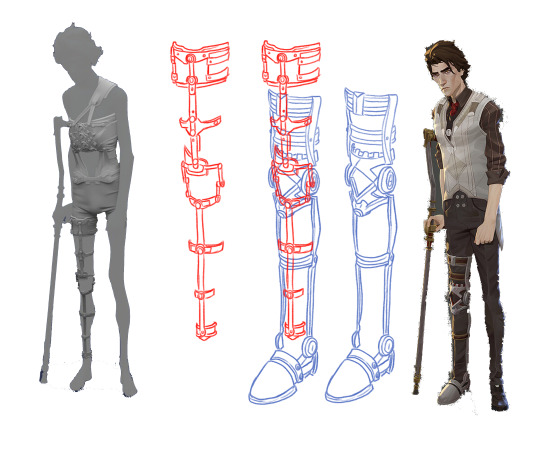
Was looking at refs and since Viktor has two different leg braces I was wondering, do we think he wears them simultaneously?? The refs don't perfectly line up perspective-wise so it's hard to tell but parts of the one he wears during the Hexcore scenes look like they could maybe line up with the brace that he wears over his clothes, but also some parts really don't and look like they'd be super uncomfy. Also HOW does he take these on and off. Experts weigh in
#viktor#arcane#ig my assumption would be that he wears both simultaneously cause in the scene where he injects the shimmer#it seems implied that he just threw off his clothes and kept experimenting#so one might assume he was already wearing the smaller one underneath#tho it is a funny image to think of him just being like 'one sec i gotta go all the way home and grab my other brace to do this'#he can take off the back brace too cause hes not wearing it in the scene where he's in the hospital bed and you can see his shoulder#where the strap would be#but that one seems to make even less sense functionality wise#everything looks like its screwed together#or screwed INTO him#but only the top bolts on his spine are i think#in the close ups of his back brace model it looks like theres cushioning underneath the parts of it that cover the rest of his spine#so he can take it off. but HOW#what parts of it unscrew/detatch to pull open and off#does it not do that at all and he just has to shimmy it off his shoulder and all the way down his legs to get it off like a romper#the shape language of the designs are cool but like. tell me how it wooorrkkksss#forgive me if im just dumb and dont know at all how braces work and theres a very simple practical explanation for all this#any king who wants to infodump about mobility aids at me....the floor is yours#something to be said i suppose about the fact that zaunites have crazy prosthetics with wild augmentations that work flawlessly#and piltover's like. idk heres some fucking uncomfortable ass metal. salo gets wheelchair in non ada compliant place#they havent ever needed to adapt to accommodate disabilities etc etc#or maybe artists were just like 'heres a design' and everybody clapped and didnt give it a second thought#and then they just turned off the visibility on the mesh when they didnt need it knowing thered not be a scene where its taken off#dont even wanna THINK about what that rig would look like#like 40 different controllers#soft body and rigid hard surfaces needing to move together....#a cold chill just shot up my spine#<- guy who is only an animator and doesnt know how to rig#forgive the magic wand tool with zero cleanup. i am lazy
5K notes
·
View notes
Text
Just a little sneak-peak of animation that rendering for 10 hours by now. I wish my computer will not crash of this.
Brains out night.
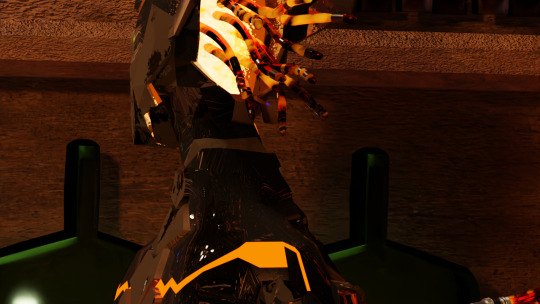
For @somerandomdudelmao who keep me up in this project by their art. <3
previous footage video from the future some meme
funny earliest model
the headless model
the first sketch model
#dystopia au#in fact#there are not many frames#It's just rendering in cycles (very ditailed and good with lights but will eat your computer alive)#and my videocard is slowly dieng slow#somerandomdudelmao#cass creature#3d#cass#3d art#blender#blender3d#blender art#blender render#blender npr#art#3d animation#3d artwork#3d model#hard surface#scifi#sci-fi#sci fi#dieselpunk
461 notes
·
View notes
Text


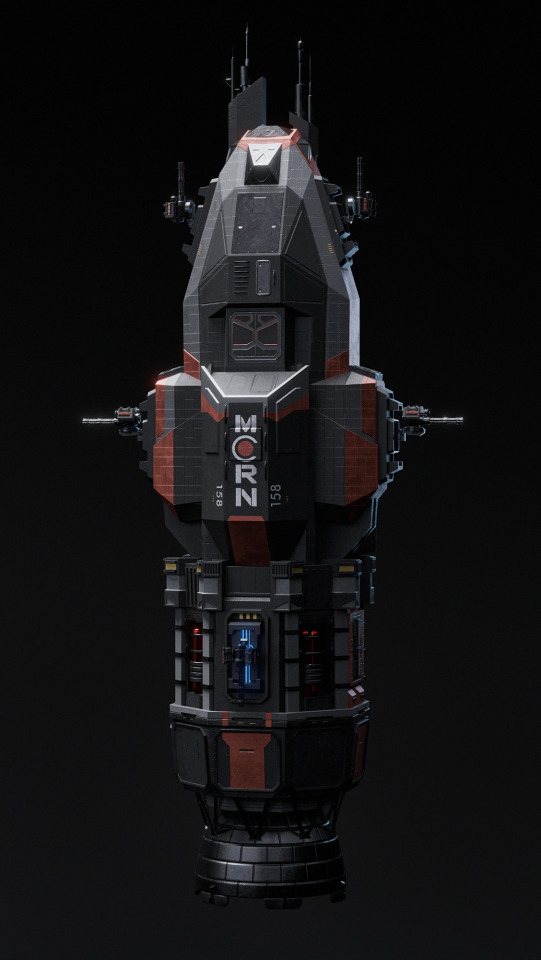
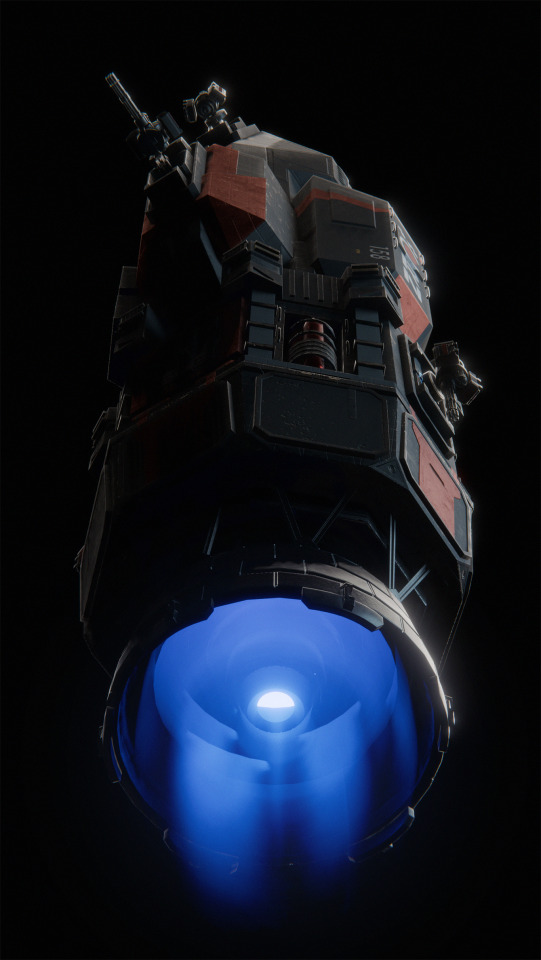
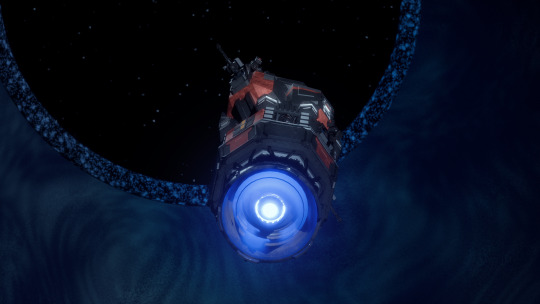
This is what I was spending most of my time on. MCRN Tachi 3d model 💁🏻
Original concept by Ryan Dening.
#the expanse 3d model#the expanse fanart#mcrn ship#hard surface#3d model#3d animation#rocinante#spaceship#the expanse
253 notes
·
View notes
Photo






Frederic Daoust
Principal Character Artist
artstation facebook instagram linkedin
More from «Artstation» here
#fredericdaoust23#transformer#cyberpunk#robot#Frederic Daoust#Hard Surface#samourai#Character Modeling#Mechanical Design#mechanical#artstation#artist#art#drawing#noai
34 notes
·
View notes
Text




I didn't remember I had this bee on mi drive :(, It's been already 2 years
#transformers one#transformers#transformers g1#bumblebee#3d art#3d model#artwork#digital art#3d#my art#blender#transfromers#hard surface
45 notes
·
View notes
Text


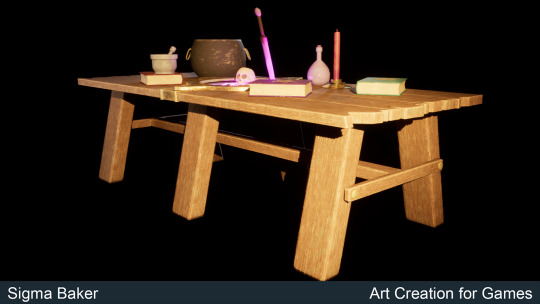
Tumblr really likes to fuck my image quality so here's the goods on my ArtStation!
All assets modeled by me; Hard surface assets modeled in Maya 2023 Skull sculpted in ZBrush 2024 Textures & Materials created in Substance 3D Painter Assembled and Real-Time Rendering in Unreal 5.2.1
Total Time is roughly a month. I like taking the time to learn new stuff! ...All this prep for one TARDIS console project! I can't wait til' its at a point where it's worth sharing.
#siggy speaketh#my art#3d art#hard surface modeling#hard surface#3d modeling#real time render#unreal engine#game art#autodesk maya#zbrush#substance painter#substance 3d painter
3 notes
·
View notes
Text

Month 3, day 5
I thought those sunbursts were going to give me more trouble but I actually figured it out pretty easily :D
Now I'm debating if I want to change up the design on that... dangly bit. I'm sure it has a proper name but idk what it is. The metal slat trailing down the handle from the head. I'm trying my hardest not to call it the shaft lol
#the great artscapade of 2025#art#my art#blender#blender render#blender 3d#cycles render#cg fast track#hard surface modeling bootcamp 2#I also want to do something on the pommel proper instead of just on the protrusion#but whaaaaat#that is pretty much always the question
7 notes
·
View notes
Photo






also Jagun Sheild and WolSabre
#featuring some very excellent little spines on the hilt#and a big gooey eyeball#hard surface modeling#3d modeling#Magiranger
0 notes
Text
3D Modeling Games on a Budget Free Tools That Compete with Industry Giants
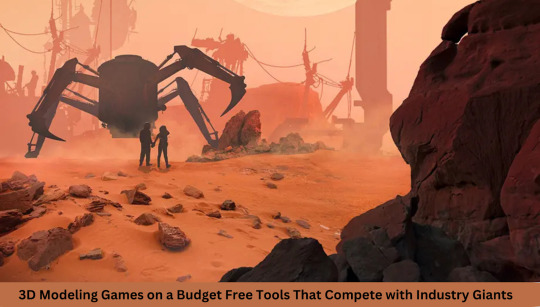
In the ever-expanding world of game development, 3D modeling plays a crucial role in shaping immersive experiences. From crafting realistic 3D game assets to developing expansive 3D game environments, the need for high-quality 3D content is more prominent than ever. However, premium tools like Autodesk Maya, 3ds Max, and ZBrush often come with steep price tags, creating barriers for indie developers, hobbyists, and students. Fortunately, a range of free 3D modeling tools now provide professional-level features that allow you to build games without burning a hole in your wallet.
This blog explores how to create 3D modeling games using free tools that can rival industry standards. Whether you're working on Hard Surface Modeling, designing a car 3D model, or developing detailed 3D game environments, you'll find the right tool to bring your vision to life.
Why Choose Free Tools for 3D Modeling Games?
Before diving into the tools, it's important to understand why choosing free software is not a compromise in today’s game development scene. Open-source and community-driven platforms have matured significantly, offering robust capabilities such as:
High-poly and low-poly modeling
UV mapping and baking
Rigging and animation
Sculpting and texturing
Real-time rendering
Free 3D modeling software can help you build professional 3D game assets and props 3D model without compromising quality, making them ideal for game studios on a budget.
Top Free Tools for 3D Modeling Games
Let’s look at some free tools that can help you build stunning 3D game environments, realistic vehicles, or detailed props for any game genre.
1. Blender – The Ultimate All-Rounder
Blender is the king of free 3D software and a favorite among indie developers and professionals.
Key Features:
Industry-standard 3D environment modeling, sculpting, and UV unwrapping
Built-in Cycles and Eevee render engines
Add-ons for game export formats like FBX, glTF, and OBJ
Blender excels at creating everything from stylized 3D game environments to realistic car 3D model structures with excellent polygon optimization.
2. SketchUp Free
For those new to 3D modeling games, SketchUp Free offers an intuitive browser-based interface ideal for basic Hard Surface Modeling and quick asset prototyping.
Ideal For:
Simple architectural or environmental layout
Early-stage 3D game environment blockouts
Basic 3D vehicle modeling and structures
While it lacks the depth of Blender or other professional suites, it’s perfect for beginners and level designers looking to experiment without a steep learning curve.
3. MagicaVoxel – Voxel Art for Stylized Games
If your game leans toward pixel art or voxel-based aesthetics, MagicaVoxel is an outstanding free choice. It allows you to create props 3D model, characters, and environments with a retro-inspired look.
Key Advantages:
Lightweight and easy to learn
Ideal for mobile and indie games
Exports to common 3D formats for game engines
Voxel games like Crossy Road and Minecraft-inspired titles have shown that stylized 3D modeling games can be just as engaging as hyper-realistic ones.
4. Wings 3D
While it lacks animation capabilities, it’s perfect for crafting game-ready props 3D model or vehicles.
Use Cases:
Modeling car 3D model for racing games
Creating a clean topology for export into game engines like Unity or Unreal
Low-poly 3D game assets are ideal for mobile optimization
5. ArmorPaint – Free Texturing Alternative to Substance
ArmorPaint is an open-source alternative to Substance Painter that allows for real-time 3D painting with PBR workflows.
Key Features:
Layer-based texturing
Real-time preview of materials
Integration with Blender and Unreal Engine
Perfect for those looking to polish their 3D game environment with realistic or stylized surface textures.
Creating Game Assets on a Budget: Best Practices
While using free tools helps reduce costs, maximizing efficiency in asset creation is just as important. Here are a few best practices:
1. Start with Modular Design
Design modular 3D game assets like walls, doors, and props that can be reused across your 3D game environments. This saves time and optimizes memory usage in the game engine.
2. Optimize for Performance
Games demand optimized geometry. Avoid unnecessarily high polygon counts, especially for mobile games. Even for 3D vehicle modeling, consider LOD (Level of Detail) techniques to maintain frame rates.
3. Utilize Free Libraries
Leverage community libraries like Sketchfab, CGTrader (free section), and Blend Swap.
Industry Examples of Games Using Free Tools
Some successful games and developers started their journey with free 3D tools:
"KRKAL 2" used Blender exclusively for character and level modeling.
"Supraland", a hit indie title on Steam, was created by a solo developer using Blender and UE4.
Voxel-based mobile games like The Sandbox started with tools like MagicaVoxel for content creation.
These games stand as testimony that free tools can produce stunning visuals and gameplay experiences when used skillfully.
Challenges and How to Overcome Them
While free tools offer a lot, they may lack certain features found in paid software. However, you can overcome these limitations through:
Community Plug-ins: Blender’s massive community offers add-ons for rigging, hard surface modeling, and exporting to engines like Unity and Unreal.
YouTube Tutorials: Free courses and tutorials can speed up your learning curve, especially for complex tasks like 3D hard surface modeling.
Combining Tools: Use Blender for modeling, ArmorPaint for texturing, and Unity for scene building to create an effective game pipeline—all at zero cost.
Conclusion: Create Without Limits
You don't need an expensive subscription to start your journey into 3D modeling games. With powerful free tools like Blender, MagicaVoxel, and SketchUp, you can build high-quality 3D game assets, realistic 3D vehicle modeling, and immersive 3D game environments without spending a dime.
From Hard Surface Modeling to designing a props 3D model that fits perfectly into your fantasy world, these tools empower creators to bring their vision to life on any budget. As technology advances and communities grow, expect even more capabilities from free 3D software shortly.
#Hard Surface Modeling#3d game environments#game assets#3d vehicle modeling#props 3d model#3d modeling games#3d modeling services
0 notes